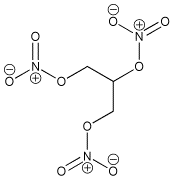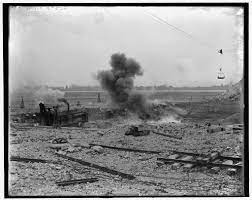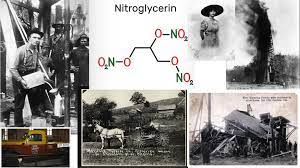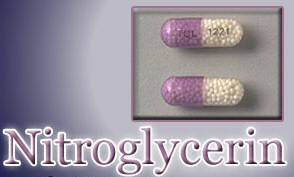Can Explosives Be Used As Medicine?
While scientific progress always expands our understanding of the world, some discoveries continue to astound us by defying our expectations in novel ways. Here, we delve into the fascinating realm of explosives, where the line between destruction and salvation is blurred. This topic is sure to pique our interest and spark a heated discussion.
According to the OSHA Laboratory Standard, an explosive is a substance that, when subjected to a sudden shock, pressure, or high temperature, releases tension, gas, and heat almost instantly.
An explosive has four basic characteristics:
- It is a chemical compound or mixture ignited by heat, shock, impact, friction, or a combination of these conditions;
- Upon ignition, it decomposes rapidly in a detonation;
- There is a rapid release of heat and large quantities of high-pressure gases that expand with sufficient force to overcome confining forces, and
- The energy released by the explosion of explosives results in four fundamental effects.
Now, moving on to our topic, how did the scientific community come up with the concept of creating medicine that is also explosive? What is that medicine? The fact that nitrate medications can set off airport bomb detection scanners and alert explosive-sniffing dogs serves as a poignant reminder of the drug's origins.
Let us explore and examine how this explosive became a cardiac drug.
 Fig 1
Fig 1Nitroglycerin is in a pale liquid or crystallized solid state. It is utilized in the production of explosives, rocket propellants, and as a cardiac medication. It is frequently combined with ethylene glycol dinitrate in the production of dynamite. Chemist Ascanio Sobrero created it for the first time in 1864, but he destroyed his notes out of concern for the harm his highly unstable discovery might cause.
Fig. 1 shows explosive NTG.


NTG - Nitroglycerin
Chemical Name: Nitroglycerin (or nitroglycerine, trinitroglycerin, glyceryl trinitrate)
IUPAC Name: 1,2,3-trinitro propane
Molecular Formula: C3H5N3O9
Explosions result from the rapid combustion of hydrocarbon fragments (fuel) that have three nitrate groups (powerful oxidizing agents) bound to them, as nitroglycerin contains oxygen, nitrogen, and carbon. As a result, a substantial amount of energy is released (exothermic reaction) as the atoms rearrange to form new molecules with strong, stable (multiple) bonds, such as N2 and CO.
Nitroglycerin explosives decompose almost instantly, generating a supersonic shockwave that propagates through a fuel-rich medium or material. It has the potential to cause a detonation, an explosion resulting from the rapid expansion of hot gases.
To consider it a medicine belies the fact that it is a harmful and potentially lethal explosive.
Nitroglycerin is a vasodilator primarily employed to alleviate angina and chest pain. Since 2000, the FDA has authorized the sale of nitroglycerin as a brand-name agent. Currently, the FDA has approved it for the acute treatment of an attack or acute prophylaxis of angina pectoris due to coronary artery disease.
 Fig.2
Fig.2
Nitroglycerin is converted to nitric oxide, a natural vasodilator, which dilates the coronary arteries, increasing blood flow and heart oxygen supply. Chest pains decrease as blood pressure drops and the heart rate rises. Nitroglycerin controls chest pain but does not cure the condition. Additionally, prolonged use may reduce its efficacy.
 FIG.3A
FIG.3A
 FIG.3B
FIG.3B
Fig 3A : Constricted artery leading to high blood pressure & increased heart rate.
Fig 3B: After Nitroglycerin administration artery dilates, improving blood flow & alleviating chest pain.
The adverse effects of nitroglycerin are dizziness, weakness, palpitations, headaches, flushing, and many more. We have explored the explosive potential of nitroglycerin in the field of medicine, where imagination has no limit. It is not quite the “magic pill” we had hoped for, but clearly shows its life-saving potential in the treatment of cardiac issues. The tiny dynamo in a bottle that is NTG serves as a reminder that even the unlikeliest of remedies can have miraculous effects. As we draw to a close on this explosive exploration, we can only marvel at the many ways in which science has surprised us and expanded our horizons. Small but profound discoveries in medicine, as in life, serve to remind us of the limitless possibilities for further advancements and research.
REFERENCE APPENDIX:
- Nitroglycerin - StatPearls - NCBI Bookshelf.
- Nitroglycerin - Dynamite is
- HAZARD SUMMARY IDENTIFICATION REASON FOR CITATION HOW TO DETERMINE IF YOU ARE BEING EXPOSED WORKPLACE EXPOSURE LIMITS WAYS OF RE
- Nitroglycerin: How An Explosive Became a Cardiac Drug
- Chapter 15: EXPLOSIVES DEFINITIONS 1. An explosive substance is a solid or liquid substance (or mixture of substances) whi
- Chapter 2 EXPLOSIVES
- Nitroglycerin | American Experience | Official Site | PBS
- The Man Who Invented Nitroglycerin Was Horrified By Dynamite | Smart News| Smithsonian Magazine


